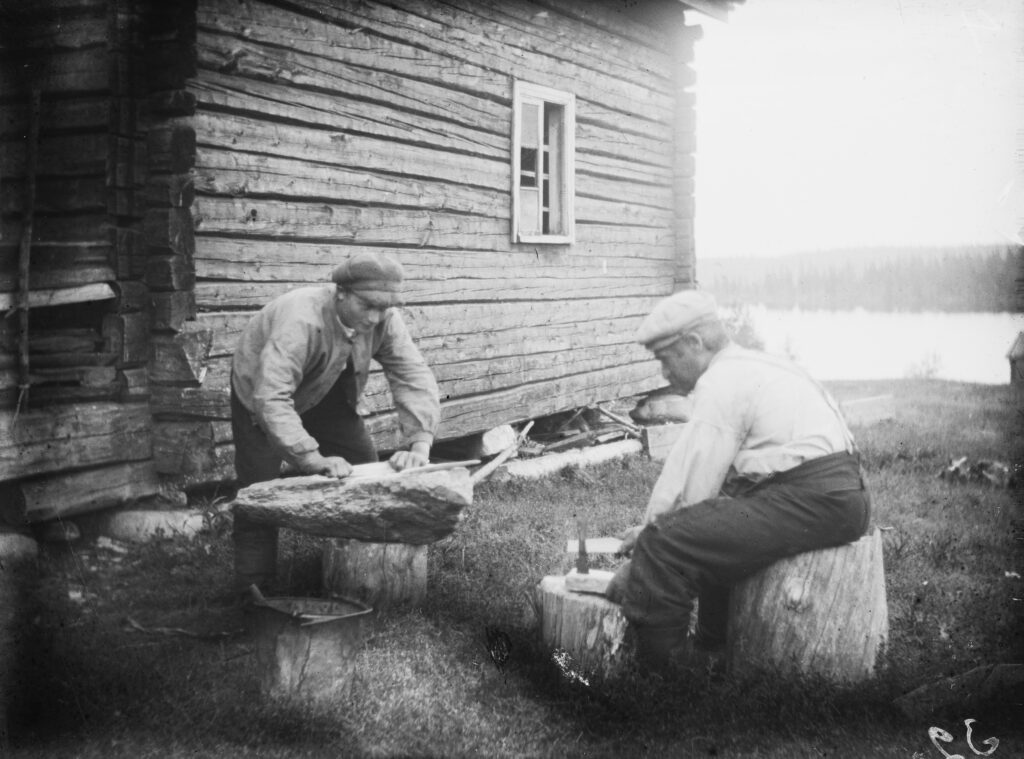Is it a good whetstone year?
In Kuusamo, whetstone became the most prominent local craft in the 19th and 20th centuries. A few households produced whetstones to be sold in the cities. The industrial production of whetstones began in 1913 in Kuusinki’s Jyrkkäkoski, later in Saunakoski and Suininginkoski. Locally important sawmills, mills and shingle machines also belonged to the milieu of the whetstone factories.
In addition to scythes, knives, axes, chisels, and knives are sharpened with Kuusamo’s whetstones.
Mills
Water and härkin style mixer mills were common in various parts of Kuusamo in the mouths of streams and rivers starting from the 18th century. Practically every village had its own small mill.
In härkin-mills, the owners milled the grains themselves until the 1950s, when Kuusamo’s first combustion engine powered mill started at Lahdentaus, Kuusamo. The mill founded by Hannes Pölkki operated until 1998.
One of the oldest härkin-mills in Kuusamo was in Vuotunki, from where the mill built in the 1730s was moved and renovated to the Kuusamo Outdoor Museum in the 1970s.
The heritage of the White Sea Karelia’s trade road
At the beginning of the 20th century, there were already seven permanent shops in Kuusamo. A special feature of the area was the transit trade of the White Sea Karelians. Several of these merchants later established permanent stores in other parts of Finland as well.
The first specialty shop, Reino Tammi’s clockmaker’s shop, was opened in Kuusamo in 1936. The heritage of the old marketplace is carried in its name by Bjarmia Oy, which has been manufacturing and selling ceramics in Kuusamo since 1974.
Belief in one’s own competence and self-made products carries Bjarmia
The ceramics company got its name from the Bjarmians: they were merchants that mainly influenced the White Sea region, whose culture flourished in the period between the Viking expeditions and the Crusades. These fur trappers and artisans roamed the North more than a thousand years ago, trading their products all the way to Norway. They stayed in the Kuusamo area for a particularly long time – as has Bjarmia.
